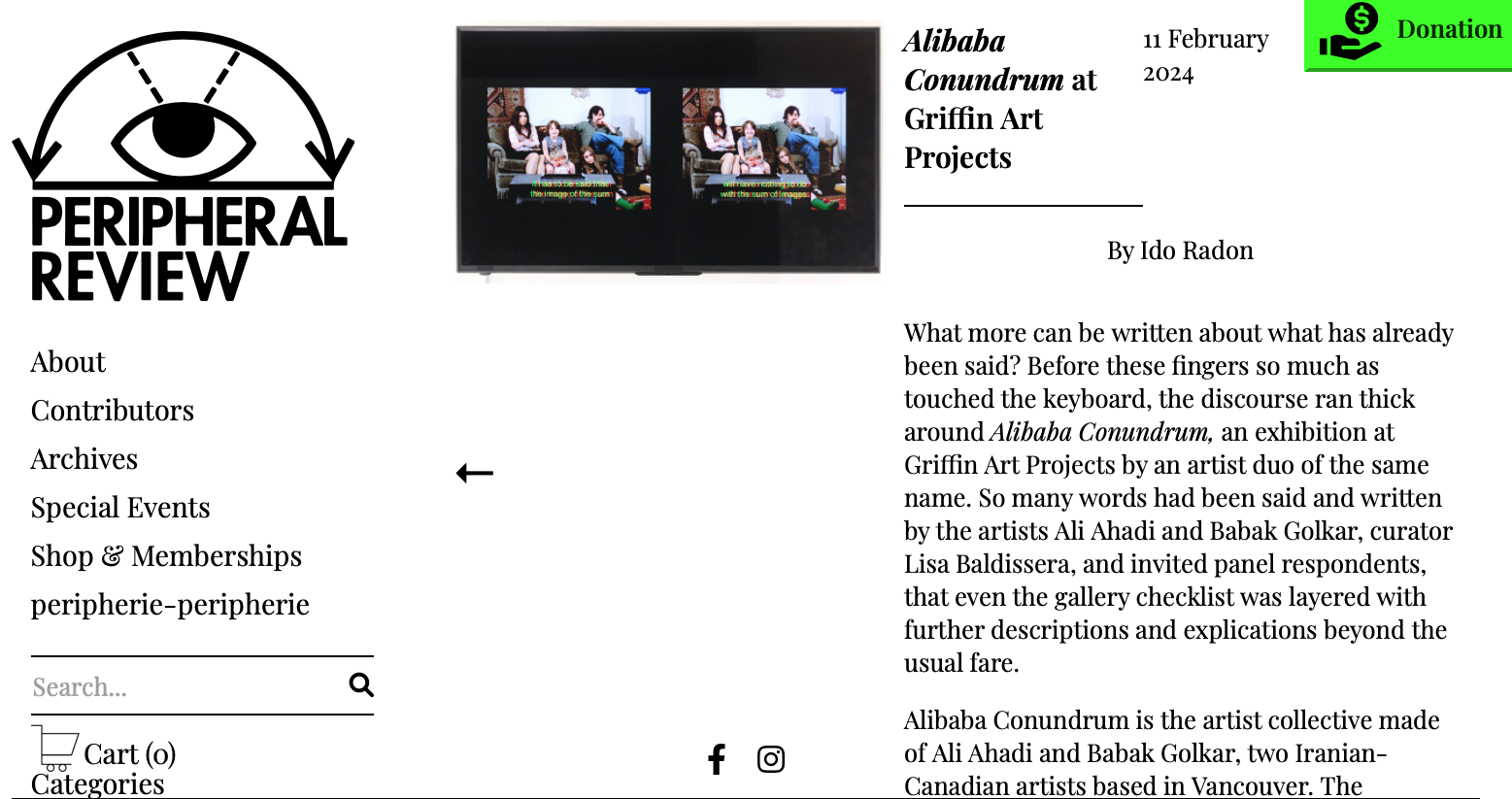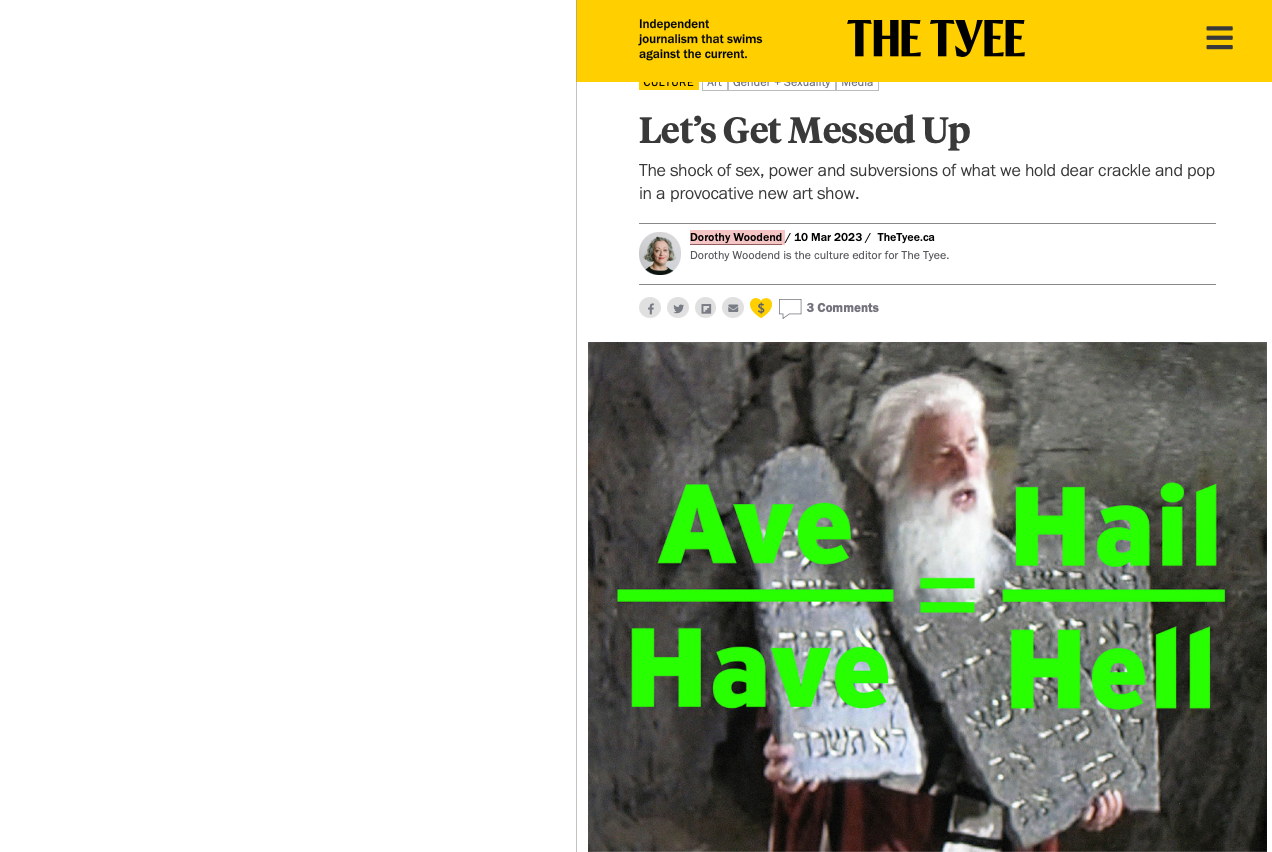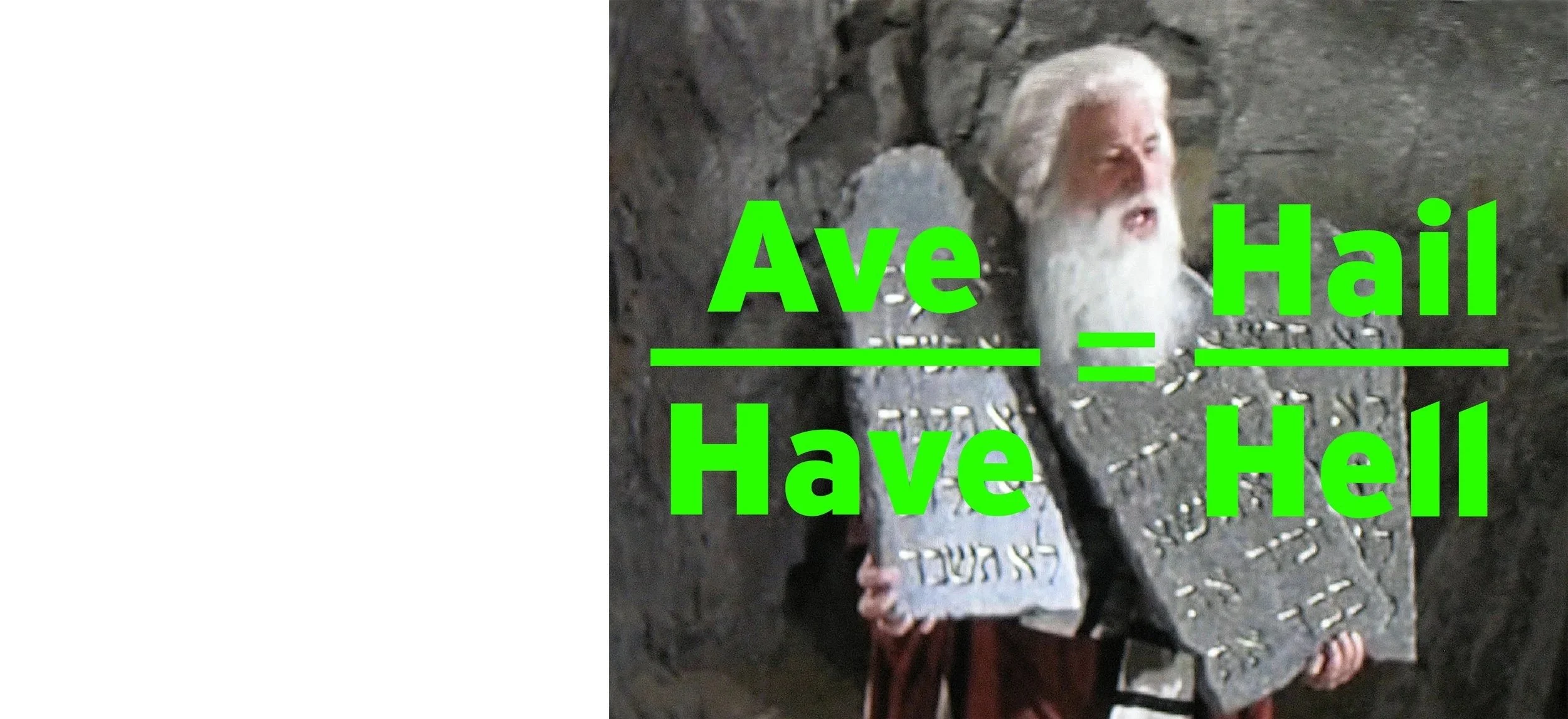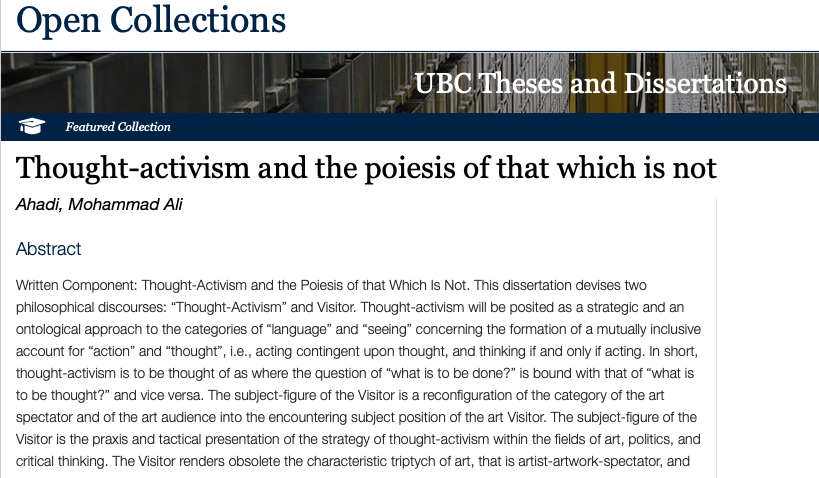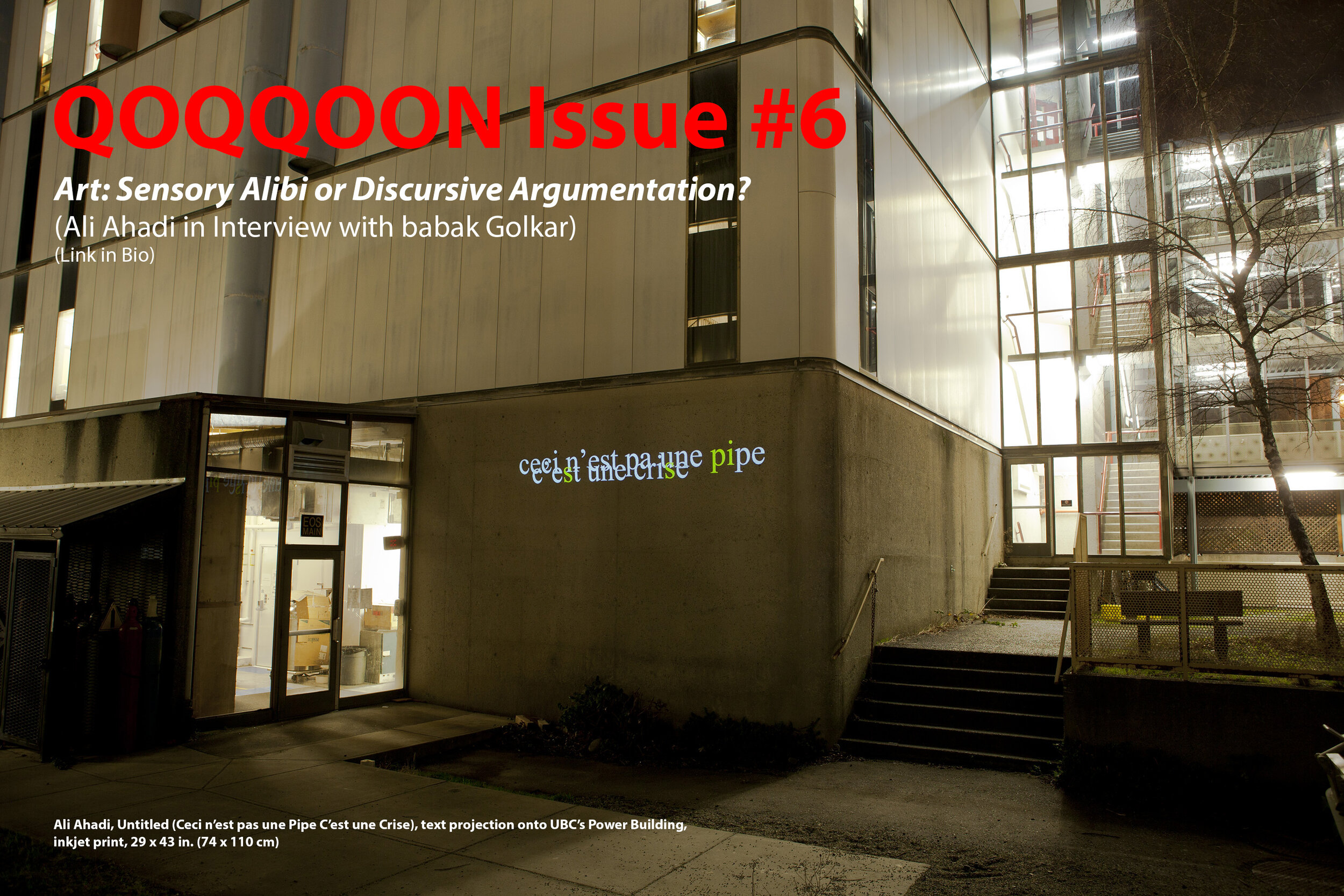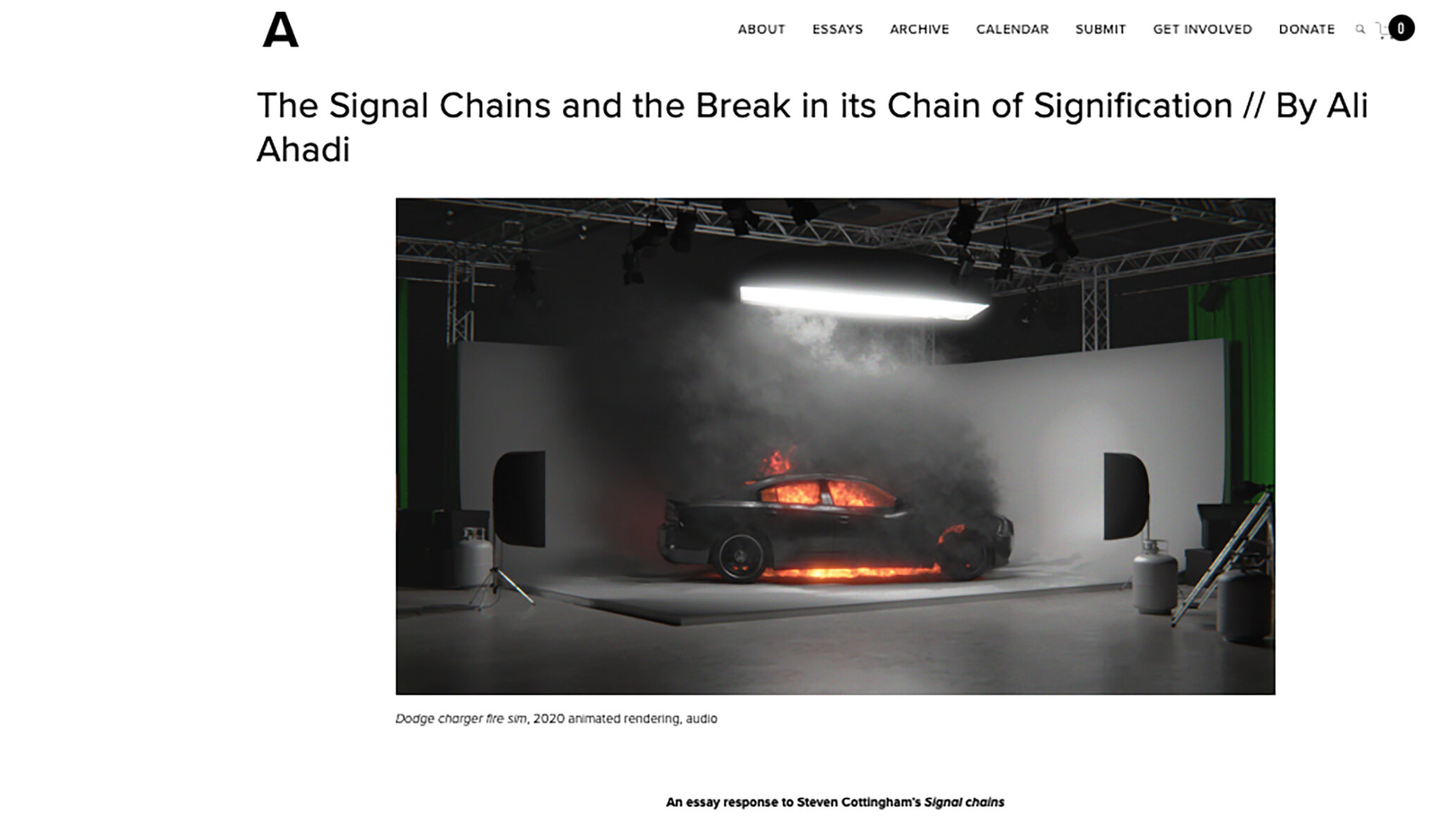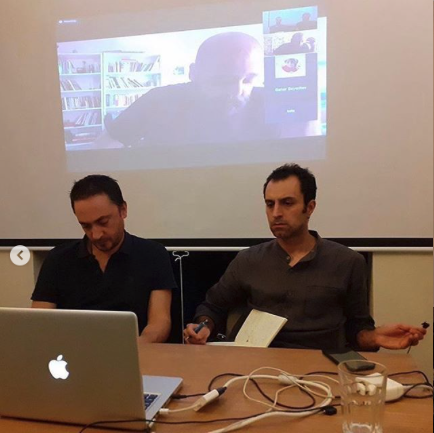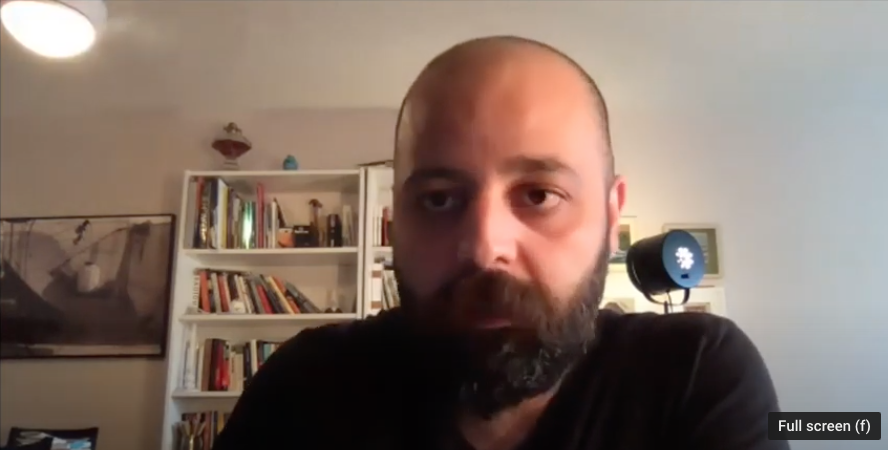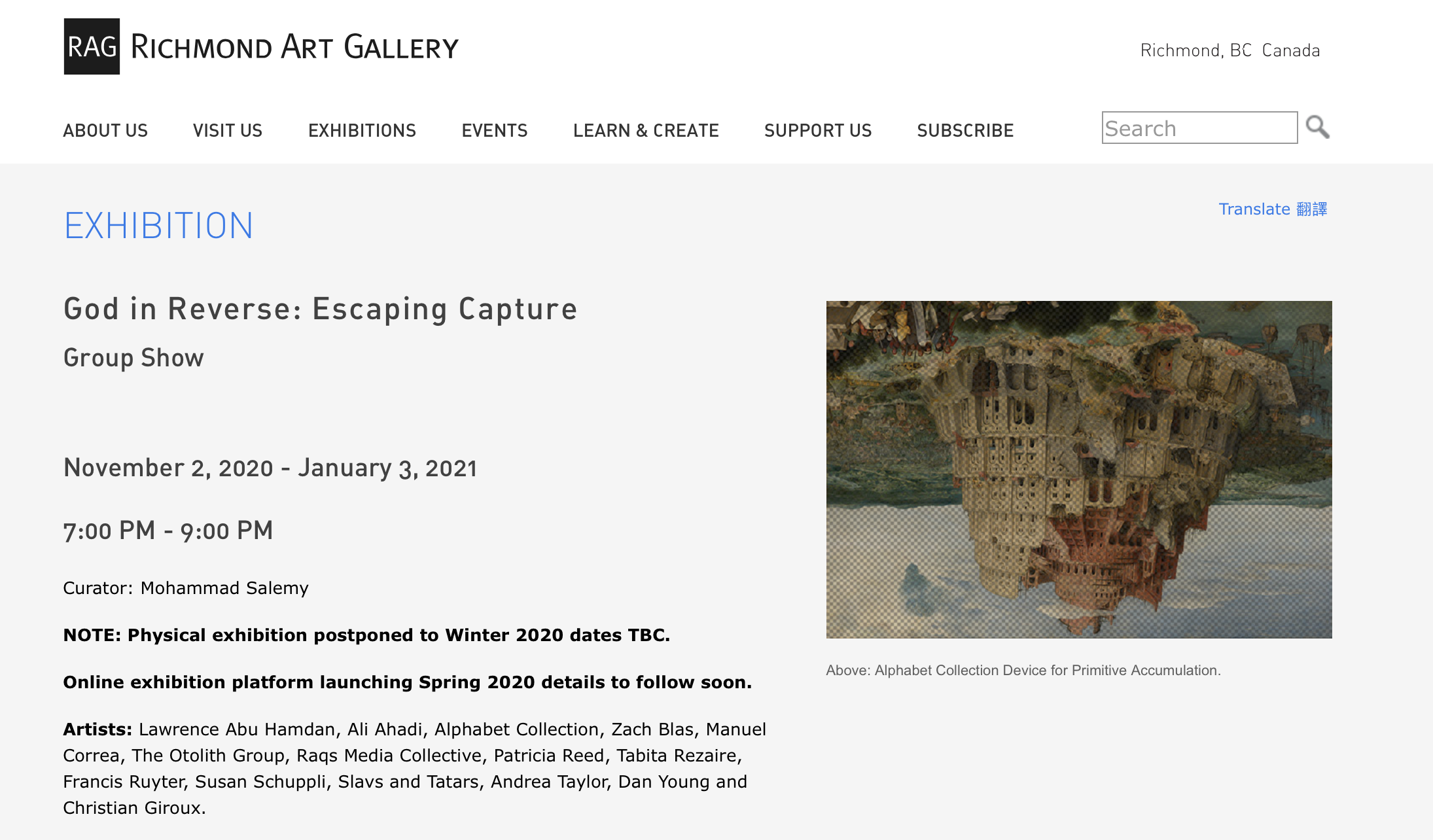Ali Ahadi is an Iranian-Canadian Vancouver based artist and writer. His practice spans site-specific ephemeral installations to sculpture, photo and video-based works, writing and translation. In Ahadi’s works, the work is constituted through addressing art’s problems of presentation and representation, monsteration and demonstration, and, finally, the relationships between aesthetics and contingent forms of abstractions.His proposed protocol of abstraction calls for what he terms a “monster”, an assemblage of a disorganized relation between the linguistic economy and the optical economy of an object. In particular, his work engages with English as the hegemonic vector of the political economy of capital, globally conditioning the possibilities of thinking. Ahadi’s “Visitor” is a subject-figure transforming this dominance from within through a counter-syntax of resistance and translation.
Ahadi is an internationally exhibited artist. He has presented solo exhibitions at Hayward Gallery, Delfina Foundation, Griffin Art Projects, Ag Galerie, Tehran 8th Sculpture Biennial, Grunt Gallery, and participated in a body of group exhibitions at Morris and Helen Belkin Art Gallery, Milan Image Art, Access Gallery, and Richmond Art Gallery, to name a few. He holds a PhD in Interdisciplinary Studies with a focus on continental philosophy and aesthetics from the University of British Columbia. He currently teaches in the UBC’s Department of Art History, Visual Art, and Theory, where he previously received his MFA in visual arts in 2012.
Ahadi is one half of Freudian Typo, a collaborative duo founded in 2025 with Ghazaleh Avarzamani, operating at the porous intersection of psychoanalytic residue, linguistic drift, and the political economies of error—within the hegemony of English.
Material and Theoretical Methodology:
Through both material and theoretical interventions, Ahadi's work argues that the defining feature of contemporary capitalism is that English globally conditions the possibilities of thinking—a hegemony operating through symbolic, social, and cybernetic apparatuses, demarcating the subject based on whether they speak it or are negatively excluded from it. In dialogue with the Hegelian lord–bondsman dialectic and Bloch’s concept of the “synchronicity of the nonsynchronous,” English must be positioned not merely as an external “Other” but as one that simultaneously inhabits both core and periphery. Ahadi's thought-activist “Visitor” does not treat English as a purely dialogic exteriority but understands it as an internalized “master” constituting the subjectivity of the self. Rather than reinforcing the particularities of their own peripheral language (identity politics), the Visitor’s task is to transform English from within—developing a counter-syntax and counter-grammar that resists English’s hegemonic logic of political economy.
Doctoral Thesis:
Ahadi’s doctoral research devises two new models for a critical approach to historical and contemporary issues in art, politics, and philosophy. These models are “Thought-Activism” and the “Visitor”. Thought-activism is a strategic and an ontological approach to the categories of “language” and “seeing” concerning the formation of a mutually inclusive account for “action” and “thought”, i.e., acting contingent upon thought, and thinking if and only if acting. In short, thought-activism is to be thought of as where the question of “what is to be done?” is bound with that of “what is to be thought?” and vice versa. The subject-figure of the Visitor is a reconfiguration of the category of the art spectator and of the art audience into the encountering subject position of the art Visitor.




